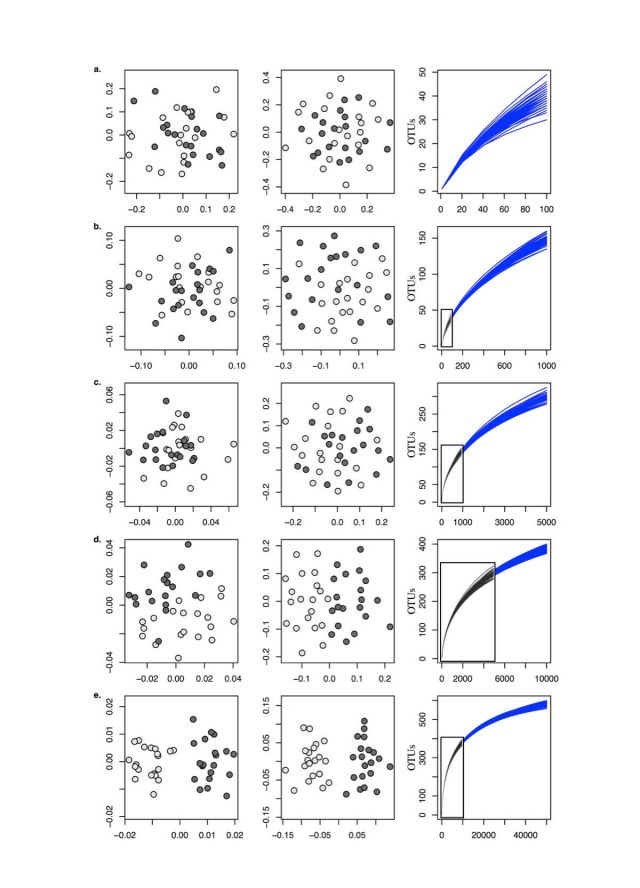New paper in PloSOne - how many samples do I need?

A confidence interval analysis of sampling effort, sequencing depth, and taxonomic resolution of fungal community ecology in the era of high-throughput sequencing.
High-throughput sequencing technology has helped microbial community ecologists explore ecological and evolutionary patterns at unprecedented scales. The benefits of a large sample size still typically outweigh that of greater sequencing depths per sample for accurate estimations of ecological inferences. However, excluding or not sequencing rare taxa may mislead the answers to the questions `how and why are communities different?' This study evaluates the confidence intervals of ecological inferences from high-throughput sequencing data of foliar fungal endophytes as case studies through a range of sampling efforts, sequencing depths, and taxonomic resolutions to understand how technical and analytical practices may affect our interpretations. Increasing sampling size reliably decreased confidence intervals across multiple community comparisons. However, the effects of sequencing depths on confidence intervals depended on how rare taxa influenced the dissimilarity estimates among communities and did not significantly decrease confidence intervals for all community comparisons. A comparison of simulated communities under random drift suggests that sequencing depths are important in estimating dissimilarities between microbial communities under neutral selective processes. Confidence interval analyses reveal important biases as well as biological trends in microbial community studies that otherwise may be ignored when communities are only compared for statistically significant differences.